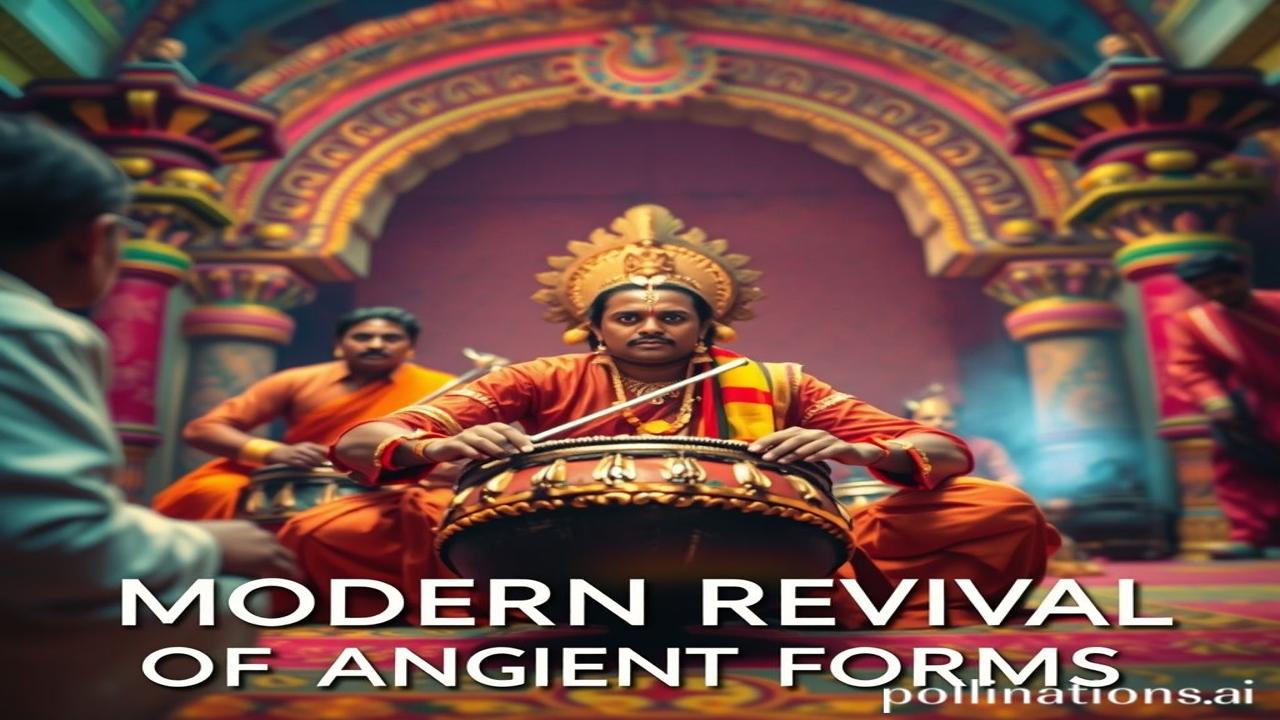Khoye Hue Suron Ki Talaash: Modern Revival of Ancient Musical Forms
Kabhi socha hai, ki kisi purani haveli ke darwaze se aati hui sangeet ki dhun, humein seedha uss zamane mein le jaati hai, jab raaja-maharaja apne darbaron mein sangeetkaroon ko samman dete the? Waqt ki dhool mein kuch kahaniyan chhup jaati hain, lekin unki aawaz, unke sur, aaj bhi humare dilon mein goonjte hain. These melodies, these ancient musical forms, they’re not just notes; they are a window into our past, being brought back to life in exciting new ways.
Sangeet ka Itihas: When Music Became Our Story
What are we talking about here? Well, we’re diving into the amazing resurgence of ancient Indian musical traditions – things like Dhrupad, Carnatic music, Hindustani classical, and even regional folk forms that were nearly forgotten.
Where did all this come from? Think centuries ago! The roots of Indian classical music can be traced back to the Samaveda, one of the four Vedas, which contains hymns set to specific melodies. Dhrupad, for example, flourished during the Mughal era, patronized by emperors like Akbar. Carnatic music, with its origins in South India, boasts a rich history stretching back to the ancient temples and kingdoms. Each form has its own unique grammar, its own specific raags and taals, each telling a different story.
Why is it so important? These musical forms are a direct link to our cultural heritage. They carry with them not just melodies, but also stories, philosophical ideas, and spiritual practices. They are a testament to the ingenuity and creativity of generations of artists and thinkers. Imagine the rasa (essence, taste) being evoked as they told tales of gods, heroes, and the everyday struggles of life. This is Bharatiyata distilled into sound.
Zameeni Sach: People and the Melodies They Made
Picture this: Rajmata Lakshmi Bai sitting in her courtyard, listening to a Dhrupad performance before a battle. The deep resonant voice of the dhrupadia, echoing off the stone walls, filling her with courage and resolve. Or perhaps, a young Meera Bai singing a devotional bhajan, her voice full of longing and love for Krishna, accompanied by the rhythmic clanging of manjiras.
“Beti, ye sangeet humari dharohar hai,” an old guru might say to his student, as he carefully tuned his tanpura. “Isse sambhal kar rakhna, kyuki isme humari pehchan chhupi hai.” (Daughter, this music is our heritage. Preserve it carefully, because our identity is hidden in it.)
Even in the fields, the farmers sang folk songs as they toiled, their voices blending with the sounds of nature – the chirping of birds, the rustling of leaves. Their tools became instruments, their labor a dance, their lives a song. These were the sounds of India, the rhythm of its soul.
Dharohar Aur Pehchan: Echoes in Modern India
Today, we see a remarkable revival of these ancient musical forms. Young musicians are learning from master gurus, embracing the complexities of raag and taal. Festivals dedicated to classical music are attracting audiences from all over the world. Bollywood, too, is incorporating elements of traditional music into its soundtracks, giving them a contemporary twist.
Think of a fusion concert – a sitar player collaborating with a jazz guitarist, or a Carnatic vocalist blending her voice with electronic beats. These experiments are breathing new life into old forms, making them relevant to a new generation. It’s a testament to the enduring power of Indian music, its ability to adapt and evolve while staying true to its roots. This is our sanskruti (culture) in action, not a museum piece, but a living, breathing entity.
Mazedar Tathya Ya Bhram-Bhanjak: Fact vs. Fiction
Log samajhte hain ki classical music boring hota hai. (People think classical music is boring.) Lekin asli sach yeh hai ki it’s incredibly complex and emotionally powerful! The skill and dedication required to master these forms is astounding. Each raag is designed to evoke a specific mood or emotion, and a skilled musician can transport you to another world with their music. There’s nothing “boring” about pure, concentrated artistry.
Another misconception? That classical music is only for the elite. While patronage has historically come from wealthy individuals, the essence of the music is deeply rooted in the lives of ordinary people. Folk songs, devotional hymns, and storytelling ballads are all integral parts of the classical music tradition.
Drishya Aur Bhavnaen: The Sensory Symphony
Imagine stepping into a temple courtyard, the air thick with the scent of incense and jasmine. The sound of temple bells rings in your ears, mingling with the drone of a tambura. The walls are cool to the touch, adorned with intricate carvings of gods and goddesses. As the music begins, you close your eyes and let the sounds wash over you, transporting you to a place of peace and serenity.
Think of the feel of silk against your skin as you sit cross-legged on a carpet, listening to a ghazal. The warmth of chai in your hands as you savor each note, each word. The sight of the musicians, their faces illuminated by the soft glow of lamps, their fingers dancing across the strings.
Antim Vichar Ya Uddharan: A Final Note
The modern revival of ancient musical forms is more than just a trend. It’s a recognition of the immense value of our cultural heritage. It’s a celebration of the power of music to connect us to our past, to each other, and to ourselves. Just like the Ganga that flows eternally, these musical forms keep moving, adapting, transforming, but always carrying the essence of India within their flow.
“Sangeet aatma ki zubaan hai, aur yeh aatma Bharat ki hai.” (Music is the language of the soul, and this soul belongs to India.)
